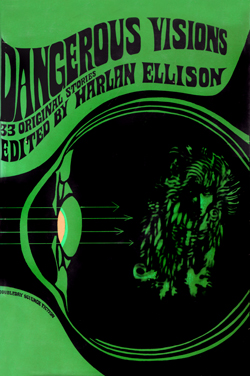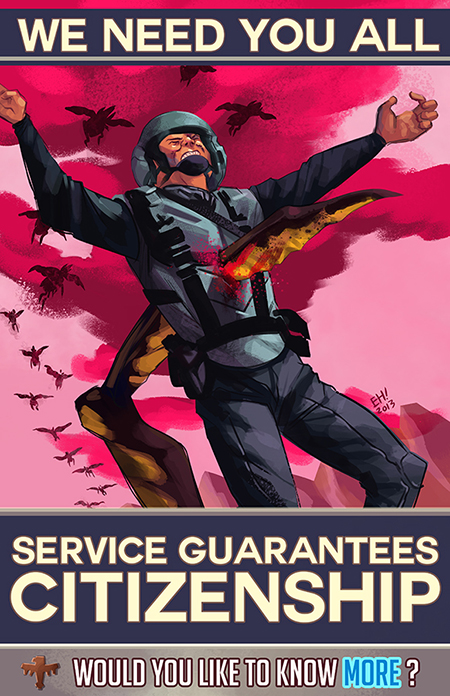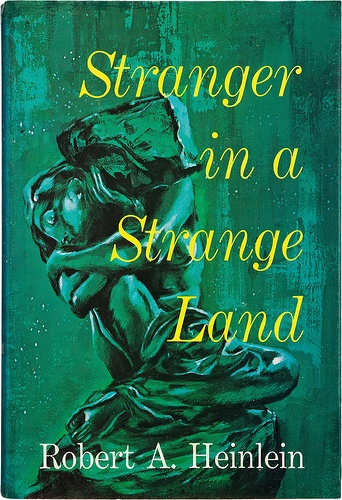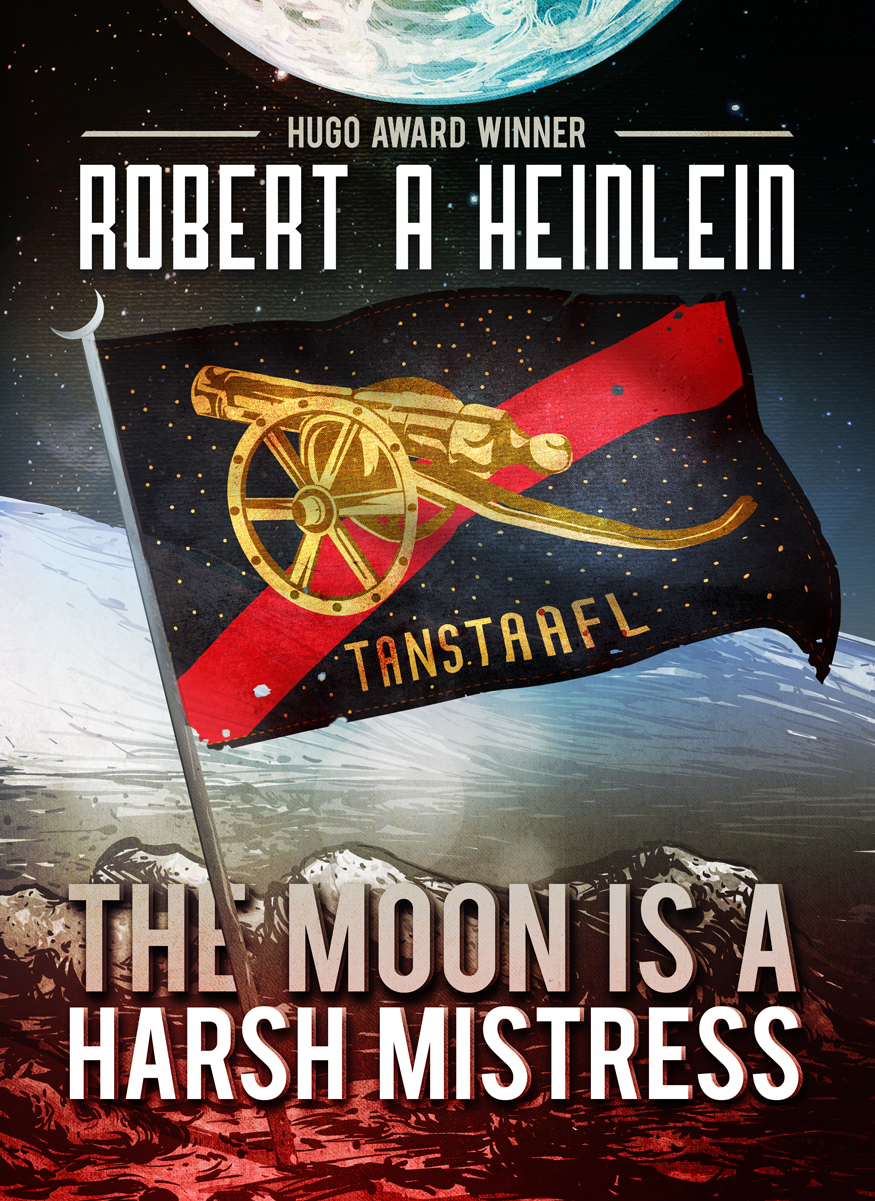
Looking Back at the Sunset
by William Alan Ritch

Robert A. Heinlein—In Dialogue with His Century:
Volume 2: The Man who Learned Better
By William H. Patterson, Jr.
“If a person names his three favorite of my books Stranger, Harsh Mistress, and Starship Troopers… then I believe that he has grokked what I meant. But if he likes one—but not the other two—I am certain that he has misunderstood me, he has picked out points—and misunderstood what he has picked. If he picks 2 of 3, then there is hope, 1 of 3—no hope.
All three books are on one subject: Freedom and self-responsibility.”
—Robert A. Heinlein
A note card in his archive, quoted in Patterson’s biography.
They are also about love. Heinlein understood that love was not just an emotion between a man and a woman. A man can love his country; his ideals. Life is loved. Liberty is loved. And there is spiritual love. From 1959 through 1966 Heinlein created three novels that explored these aspects of love. They are his three greatest novels.
Starship Troopers is Heinlein’s second most controversial book. From the very beginning it was problematic. After more than a decade of sparring with his editor, Alice Dahlgliesh, he decided to write a boys’ book that would make his young readers confront the problem of a likable role model who must deal out violence as a soldier, and that would be an answer to the mindless pacifism that predominated then as now (as opposed to the mindful pacifism of someone like Karl Hess). He knew that the book would “displease quite a few people.” And he was right—especially about his editor’s reaction. Dahlgliesh rejected it outright—and included an argumentative letter in reaction to the book.
The original title was Shoulder the Sky—a reference to the Atlas of Greek mythology who bore the weight of the world on his shoulders. Started in November of 1958, the title might have been inspired by Ayn Rand’s 1957 novel. Like Atlas Shrugged, this was a book that separated wheat from chaff and drove everyone to extremes of praise or condemnation.
Sitting here in the early 21st century we arm-chair analysts might venture to say that most of the strong reaction to this book came from the later 1960s and its opposition to a particular war, the one in Viet Nam. But history belies this simple explanation.
It was Heinlein’s intention to attack the zeitgeist and he succeeded. In 1959 the franchise was universal (for citizens over 21 and not convicted of a crime). [NOTE: Yes, there were laws to keep some people from voting, but these tricks ventured outside of the Constitution, the law of the land. There was, at least, lip-service to universal suffrage]. Also, America had a draft to which all young men were subject. The “what-if” in Starship Troopers was that a person earned the right to vote by volunteering for public service.
Heinlein was opposed to the draft. He stated: “If there are not sufficient Simon-pure, utterly uncoerced volunteers to defend a country and save it… then let it go down the drain.” And “The thought of a draftee being required to die that I may live is as morally offensive to me as that of galley slaves, chained to their sweeps, and drowning in a battle not of their choosing.” And his view of the universal franchise was equally out of step: “The franchise is not a ‘natural right’ to be handed out as freely as party favors at a children’s party but to be earned by toil and danger at great personal sacrifice.”
With this novel Heinlein attempted to prepare a generation of pampered and rudderless young men that had been brought up to expect to be drafted (into a peace-time army) and were expected to start voting to maintain the status quo once they are 21.
Patterson deals very well with the perennial false accusation of fascism laid against this novel. I have also written that Starship Troopers is not a fascist novel at great length in Cult Movies/Spacemen and Frefanzine.
What is this book about? It is about love. The love that one man can give by risking and laying down his life for his country.
In this case, country means not the land that exists within borders drawn on a map, nor a ruling elite, nor even the idea of the country. In the book the country is Earth, the Terran Federation. It is the idea of humanity that must be defended, the existence of the human race that must be preserved.
Heinlein created a straw man adversary, the Arachnids of Klendathu (the Bugs). He stacked the deck to make war inevitable. The Bugs are not individuals, they are pieces of a hive-mind. They are relentless and implacable. It is an unequivocal them-or-us scenario. There is no room for peace—only war. Humans must confront this existential threat. There is no alternative.
Thus the novel debates the use and function of the military, of public service, and the unavoidability of armed conflict, destruction and death. It is about teamwork and individuality. Freedom and responsibility.
Starship Troopers showed his boy readers that some choices are thrust upon you—with neither your preparation nor permission. Nevertheless you still have a choice. And our hero, Johnny Rico, chooses to risk his life to defend the lives of others.
There is the theme of this book. The love of your fellow man. Regardless of the dictates of natural rights (in which Heinlein did not believe) the rights of life and liberty must be secured by the risk and deaths of others.
Heinlein weaves a subtle and compelling pointillist picture of how a government created upon these principals could function and could flourish. For the past fifty-something years this book has confounded and befuddled its critics. In their guts they know that there is something about the philosophy of this book that is distasteful to their cowardly souls. It questions their fundamental beliefs and challenges their logic. And they know only one word for a political belief that defies them: fascism.
Again, I have dealt with that canard in other essays. Here I will just say that Patterson’s biography reveals, via Heinlein’s own notes and letters, what we have long suspected. Heinlein is not advocating a perfect governmental system in Starship Troopers, instead, the book questions the existing system. It offers some alternatives and asks us to think about them. It debates the place of the government, especially the military, in our world. In short, it demands that its reader think.
And its critics hate it most for that.

When Harlan Ellison was putting together Dangerous Visions he contacted Robert Heinlein because it was “utterly necessary,” according to Ellison, that Dangerous Visions have a Heinlein story. A legendary anthology now, no one knew what Ellison would manage to pull off in creating this collection of rule-breaking, genre-bending stories. It was understandable that he wanted a Heinlein story. But Heinlein was busy with getting The Moon is a Harsh Mistress out. And was now concentrating on novels. So Ellison told him what he had told other writers: he wanted stories that the writers had been unable to sell because they were too outrageous, too controversial. Heinlein had a story he had not been able to sell—but to be fair to Ellison it wasn’t very controversial and the reason it had not sold was that it wasn’t structured much a like a short story and it wasn’t really science fiction—or fantasy. Ellison bounced the story and Heinlein did not appear in Dangerous Visions.
He had already written his Dangerous Visions story—it had sold and was published five years earlier. It was called Stranger in a Strange Land. It is his most well-known book. And it was his hardest to write.
He started working on it in 1948 when his wife, Ginny, suggested the idea of a Mowgli kind of story where a human baby is raised not by wolves—but by aliens—and then returned to Earth. Originally planned for the story “Gulf” for Astounding, (the title from a letter-to-the-editor which “predicted” the table of contents of a future issue of the magazine) it soon expanded well beyond the limits of the planned novelette. Then it grew even larger than that.
He wrote it and rewrote it—off and on—for more than ten years. He changed point-of-view characters. He switched focus. He rethought what he was trying to say. And, over those years, he began to understand what kind of writer he wanted to be.
In the 1940s Heinlein had become the acknowledged master of the Astounding science fiction story. In the post-war period he moved into the broader (and more lucrative) market of the slick magazines. Throughout the 1950s Heinlein dominated the field of boys’ adventure science fiction novels. He continued to be published in the SF and slick magazines. He was adapted into movies—both authorized and unauthorized films.
In 1961, with the publication of Stranger, Heinlein became not only a mainstream author, but the author of a book that had melded the mainstream and science fiction genres, and broke through to the top of the New York Times bestseller list. The same man who was the inspiration of several generations of scientists and engineers would also become the unwilling guru to the generation of drop-outs, hippies, and neo-religionist disciples. But it is about more than that—is a book about morality.
Heinlein had been stifled by the SF ghetto; hemmed in by the arbitrary rules and restrictions imposed on his Scribner juvies. He wanted to break free and tell stories to adults about the world around them. Just as his juvies had made many a boy (and girl!) stop and think, and examine their fundamental beliefs, Heinlein wanted to get through to adults and make them contemplate everything they understood about the world. In particular, in Stranger, he wanted them to think about religion, politics, sex and love.
Especially love, since that is what Stranger in a Strange Land is all about. Romantic love, sexual love, the love of the divine and the love of the divine for humans.
In 1961 Stranger was a New Wave SF novel years before the New Wave. As such, it was not a book influenced by the stream-of-consciousness writing of James Joyce or the multi-modal works of John Dos Passos. Nor was it directly influenced by Kipling, despite its impetus. No, this book of love was a product of Heinlein’s love for the ironic and satirical fantasy of James Branch Cabell. In one book Heinlein switched from being Campbellian to Cabellian.
The success of Stranger was quick and lasting. Despite being told with a direct, fluid narrative style (unlike Dahlgren or Ulysses, as alluded to above), not everyone “got it.” Some reviewers inside SF either failed to understand what Heinlein was saying—or intentionally pretended not to understand. And outside SF many reviewers were hopeless, like the review in the New York Times by Orville Prescott. Just to be fair to the NYT Prescott also didn’t get Lolita or the works of Gore Vidal. He, along with Bosley Crowther for film, proved just how out of touch the NYT was in the 1960s… and probably still.
The Moon is a Harsh Mistress is about the love of freedom; the love of liberty. In the novel, Heinlein demonstrates how expensive freedom is and how easily it is lost. He also shows that like life, liberty will not be contained. It breaks free.
It is hard for me to write about The Moon is a Harsh Mistress. It is my favorite Heinlein book. It is my favorite novel. Period. So forgive me if I gush a little here.
The original title was The Brass Cannon. The title came from a brass signal cannon (not a weapon of war) that his wife, Ginny, bought on a trip to New Orleans in the early 1960s. It wound up in his house where he would use the cannon to spin an apocryphal yarn about its previous owner. The brass canon (and the yarn) wound up in the novel where it is purchased on Earth to become the symbol of the lunar revolution. I remember seeing the actual cannon on Mrs. Heinlein’s lawn when she lived in Atlantic Beach, Florida. After she passed away she left the cannon to Brad Linaweaver, who had the cannon cleaned and restored so that it could actually fire. There is a YouTube video of Patterson and Linaweaver exhibiting the cannon. Later, there is a firing of the cannon in honor of the Heinlein centennial.
This title once again got changed by its editor, Peter Israel, when the novel reached Putnam’s.
The Moon is a Harsh Mistress should be studied as a textbook on how to write a science fiction novel. The plot and the theme of the book are carefully crafted to support one another. The philosophy of the novel is discussed, debated and demonstrated within the novel itself. The characters are well-drawn and memorable with clearly defined personalities. The style of writing itself brings you into the world of Luna in 2076 by creating a slangy English—without losing the reader along the way.
 The storied brass cannon in mid-fire. The storied brass cannon in mid-fire.
Simply put, the plot of The Moon is a Harsh Mistress is about a revolution on the Moon against their political masters on Earth. All similarity to the American revolution against England is completely intentional. Heinlein was counting on his American readers to be sympathetic with the lunar colonists in the struggle against their long-distance oppressors.
Luna is a penal colony where Earth has banished its criminals, political discontents and their offspring. The bodies of those living on the Moon quickly become accustomed to the lower gravity and can no longer tolerate Earth’s gravity for very long. A sentence to the Moon is a life sentence. Being born on the Moon is the same.
In such a case there is no need for walls in this prison. A trip outside the air domes is instantly fatal. There is nowhere to go. There is no escape to Earth. So the Lunar Authority does very little to control the populace. It cares only about the big things: getting the crops harvested and the ores mined and shipping them back to Earth. In absence of rules from above the Loonies have developed their own customs and norms. Since the ratio of men to women is 2:1 polyandry flourishes and women are treated with reverence and protected by common consent. Many of the population may be criminals but the true sociopaths and psychopaths are neither nurtured nor reformed—they are quickly and quietly dispatched through airlocks without benefit of space suits and are no longer a problem. They are executed by common consent. Most of the rules are enforced by common consent and in many ways the lunar penal colony is a practical—if virtual—anarchy.
Even with all this practical liberty the loonies still chafe at the Lunar Authority and its “Protector” (commonly called the Warden). There is a revolutionary underground that is very serious about their politics but pretty much ignored by the rulers, because: what can they do?
The structure of the society forms a texture that Heinlein has layered on top of this tale. Now he can expose the reader to an interesting society that has practices that he wants the reader to ponder.
Into this milieu he throws his characters.
Manuel Garcia O’Kelley-Davis (”Mannie”)—an innocent (politically!) computer technician who investigates the revolutionary underground only to appease his curious friend, Mike.
Wyoming Knott (”Wyoh”)—a young woman who is a transferee (read “prisoner”) from Earth. Mannie can tell she is a recent arrival since she is a blonde and, on the Moon, “colors rarely stay clear past the first generation.” She is an instinctive revolutionary.
Professor Bernardo de la Paz—a kindly, elderly political dissident who calls himself a Rational Anarchist and is the intellectual leader of the revolutionary gathering. He is based on the libertarian pacifist Robert LeFevre.
Mike—a HOLMES Mark IV supercomputer that “woke up” one day as sentient. He runs all the computer-based systems on the Moon (including rocket launches and landings). Mike is much like Valentine Michael Smith in Stranger in a Strange Land: he is extremely powerful but has a child-like innocence and ignorance of humanity. At the start of the novel, Mike’s only friend is Mannie, because Mannie is the computer technician who comes to “repair” him.
All these characters are smart and intellectual. Rather than just acting, they think about their actions first and argue and discuss—thus letting the reader see the process of reason. It encourages the reader to ponder what he might do in the same situation. With these elements Heinlein can weave a story that is both thought-provoking and exciting. He used similar techniques in his Scribner juvies but here they are in full flower.
And Heinlein adds a masterful touch: the language of the Loonies. Heinlein has always had a easy graceful writing style that propels the reader through the story with the speed of an FTL drive and the luxury of a classic American land yacht. In this novel he also creates a lunar patois that is a variety of English (with some Russian grammar and sentence structure) that has borrowed stolen even more Australian, Chinese and Russian words. Nevertheless, the writing remains smooth and completely envelops the reader. Heinlein may have been influenced by the earlier novel A Clockwork Orange.
And there you have the ingredients for a perfect SF novel, packed with philosophy, adventure, sense-a-wonder and sex.
And then the capper! We get to see what has happened on the Moon years after the Revolution. There has been triumph and loss. Some main characters have died during the Revolution. Some revolutionaries have gone bankrupt because of the financial cost of supporting the war (just as happened after the American Revolution).
And the post-revolution government has ignored all the Professor’s Rational Anarchist philosophy and created, instead, a moderately free government—getting less free by the minute.
Sic transit gloria lunae.
And Mannie—why he might immigrate to the asteroid belt—another Heinlein idea: freedom is on the frontier.
An ending that is bittersweet and hopeful at the same time.
Like I said, a perfect book.
| 



















